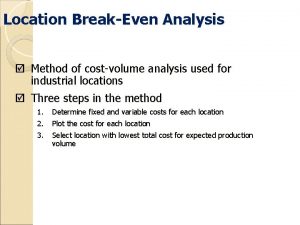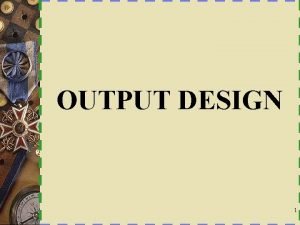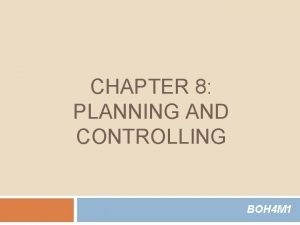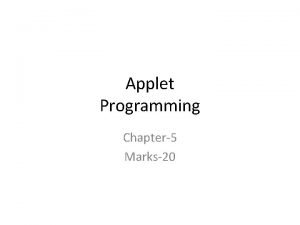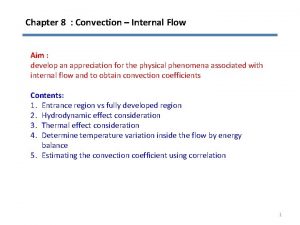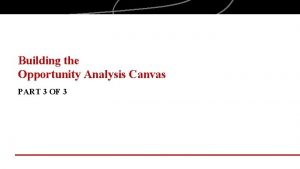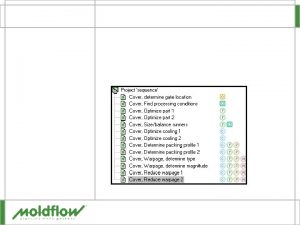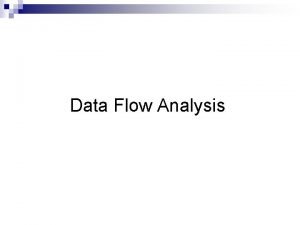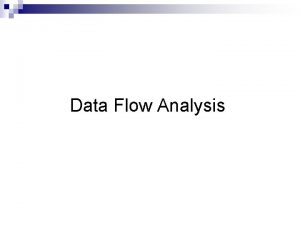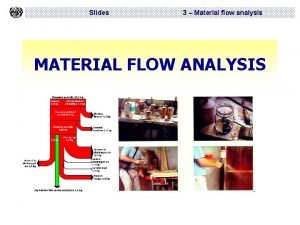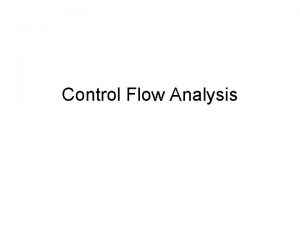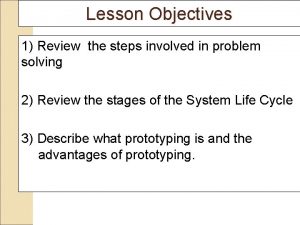Flow Analysis Steps Introduction Aim Review steps involved












- Slides: 12

Flow Analysis Steps

Introduction § Aim – Review steps involved in a flow analysis § Why do it – Every part is different – Basic analysis steps the same – Analysis objectives different § Overview – Concentrate on steps of filling – Look at § Packing § Cooling § Warpage

Moldflow Design Philosophy § Number of gates – Based on the pressure to fill the cavity – Minimum number of gates to fill the cavity § Position of gates – Position gates to achieve a balanced fill § Flow pattern – Straight fill pattern – No changes in direction during filling § Unidirectional

Moldflow Design Philosophy § Runner Design – Balanced filling of all cavities – Minimum volume § Sequence of Analysis – Optimize the cavity first – Design the runners to properly fill/pack the part(s)

Project Design Procedure Using Moldflow § Determine the analysis objectives for the project § Discuss the project with all disciplines involved § Use previous experience of analyst § Use Moldflow Design Principles § Use Moldflow Design Rules with the software § Interpret results and make changes where necessary § Discuss changes with all disciplines involved § Repeat analysis until acceptable results achieved

Optimize Fill Possible Solution A Determine Analysis Objectives Review Results 1 Prepare FE Mesh 2 Select Material Fill Problems Resolved? Y 3 Select Gate Location Select Molding Machine 4 Determine Molding Conditions 5 Set molding Parameters Run Analysis A N End Problem Possible Solution Short Shot 1, 2, 3, 4, 5 Poor Filling Pattern 1, 2, 3, 5 Poor Weld Lines 1, 2, 3, 4, 5 Air Traps 1, 2, 3, 5 High Stress 1, 2, 3, 4, 5 High Pressure 1, 2, 3, 4, 5 High Clamp Force 1, 2, 3, 4, 5 NOTE: The Fill process assumes that the model is of the part only and does not contain a feed system.

Determine Analysis Objectives The Most Important Step § Will the part fill? § Are the ribs too thick? § What material should be used? § Can the part be packed enough? § What are optimum processing conditions? § Will the snap fit break? § Where should the gate be? § Are the runners balanced? § How many gates are required? § What size should the runners be? § Where will the weld lines be? § Can the runner volume be smaller? § Are there air traps? § Is the gate the right size? § How thick should the part be? § Is the cooling uniform? § Is the flow within the part balanced? § Will the part warp within tolerance? § Are the ribs too thin to fill? § Is the press big enough?

Prepare FE Mesh § May need to iterate if mesh is not clean from CAD system Prepare FE Mesh Try 2 Prepare CAD model Import CAD model Try 1 Set Mesh Densities, Global & Local Generate Mesh Evaluate Mesh N Initial Mesh Good? Y Clean up Mesh Verify Mesh is Clean End

Optimize Flow § Adds to Fill – Runner optimization – Cooling analysis § Optional § Highly recommended – Packing analysis Optimize Fill Balance/Size Runners Cooling analysis? N Optimize Packing Profile End Y Optimize Cooling

Optimize Part § Adds to Flow – Warpage optimization Optimize Fill Balance/Size Runners Cooling analysis? N Optimize Packing Profile Optimize Warpage End Y Optimize Cooling

Optimize Warpage § Solving involves iterations back to previous work Determine Analysis objectives: Warpage Definition & tolerance Or Optimize Fill Or Balance / Size Runners Or Optimize Cooling Or Optimize Packing Profile Reduce Warpage Determine Warpage Magnitude Determine Warpage Cause Is Warpage Acceptable? Y End N

QUESTIONS?
 Location break even analysis example
Location break even analysis example Steps involved in portfolio management
Steps involved in portfolio management Process of making pochampalli sarees
Process of making pochampalli sarees Simple design for output
Simple design for output Simplex
Simplex Measuring the actual performance
Measuring the actual performance Explain the applet life cycle
Explain the applet life cycle Admission types in hospital
Admission types in hospital Steps involved in historical research
Steps involved in historical research Flow aim
Flow aim The opportunity analysis canvas
The opportunity analysis canvas Richa jain md
Richa jain md Cylinder oxygen
Cylinder oxygen
